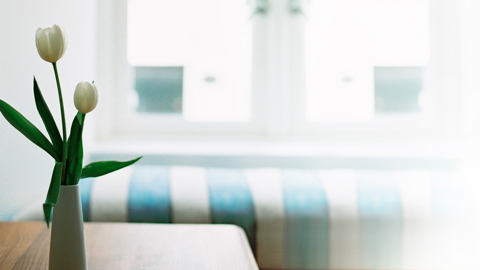Personal Style Program Outline
Personal Style Course Outline
NYIAD's online fashion styling course can help you prepare to become a personal stylist. Browse the personal stylist course outline below to find out how these online classes will benefit you. Get in-depth lessons in the history of fashion, body types and how to dress to flatter, wardrobe staples, starting your own business, and much more.
- Unit 1
- Unit 2
- Unit 3
- Unit 4
- Unit 5
- Unit 6
Unit 1 The Educated Fashionista
-
Lesson 1.1 Birth of a Designer
In Lesson 1.1: Birth of a Designer, we will inspire your studies in personal style by exploring the history of several famous fashion icons of the industry as we attempt to put your pursuit of fashion into perspective. We will discuss the role of fashion in society as well as the importance of developing a more comprehensive understanding of its global applications.
-
Lesson 1.2 History of Fashion
In Lesson 1.2: History of Fashion, we will take you through a comprehensive journey throughout the history trajectory of fashion development and stylistic changes across the globe. From the Golden Age of French fashion to 1960s Youth Culture Designers, this section will give you an all-encompassing look at how style has changed and grown throughout history.
-
Lesson 1.3 The Wide World of Fashion
In Lesson 1.3: The Wide World of Fashion, we begin by making a distinction between the personal shopper and the personal stylist. From there, we go on to explore a number of ways in which one could apply the knowledge gained from this course to a unique career within the real-world style industry.
-
Lesson 1.4 Vocabulary of Style
In Lesson 1.4: Vocabulary of Style, we will provide you with some of the terminology you need to navigate the fashion world. When warranted, this lesson will also provide a historical context to certain fashion language.
Unit 2 The Elements of Style
-
Lesson 2.1 Color Theory and Analysis
In Lesson 2.1: Color Theory and Analysis, we will give you a foundation of color understanding that you can apply as a personal stylist. You can use this knowledge to create striking ensembles for yourself or clients and to complement and flatter personal coloring and skin tone so that you and your clients always look wonderful.
-
Lesson 2.2 Design and Fit
In Lesson 2.2: Design and Fit, we'll take a closer look at those conventions of fashion as a storytelling platform and at how fashion designers blend color, texture and fit to create styles. At the end of the Lesson, we turn to working stylists for some practical style tips.
-
Lesson 2.3 Fabric and Textures: Quality and Care
In Lesson 2.3: Fabric and Textures: Quality and Care, we will discuss fabric and texture in terms of a garment's particular characteristics, quality, advantages and disadvantages, whether it's synthetic or natural or blended and how to care for it.
-
Lesson 2.4 Tailoring: Men, Women and Children
In Lesson 2.4: Tailoring: Men, Women and Children, we will help you establish a natural knowing of when to alter, what can be altered and how to alter, all in an effort to save you time and money. We learn that tailoring can add polish and sophistication, particularly when it comes to men's business suits and can make a world of difference in your personal and professional prospects.
Unit 3 Focus on Fashion
-
Lesson 3.1 Fashion Interpretations: Art and Hollywood
In Lesson 3.1: Fashion Interpretations: Art and Hollywood, we will help you put the cyclically trendy nature of fashion into a clearer context as we look to the past and the present inspirations in contemporary fashion design. While our discussion will focus primarily on European and American fashion design, we also sometimes touch on trends in Asia.
-
Lesson 3.2 Fashion Trends and Trend Forecasting
In Lesson 3.2: Fashion Trends and Trend Forecasting, we will discuss why some fashion fads catch on and others don't. We will explore the origins of certain trends as well as the cyclical nature of others as we continue to provide an introduction to the fascinating, complex world of fashion trend forecasting.
-
Lesson 3.3 Style and Look: Types of Looks and Images
In Lesson 3.3: Style and Look: Types and Looks and Images, we will now move from abstract theories of design and color and fashion basics as we instead begin to learn to craft a fashion "look" or signature style for ourselves and/or for our clients.
-
Lesson 3.4 Fashion's International Focus: Hotspots of Design, Cultural and Ethnic Variations in Style
In Lesson 3.4: Fashion's International Focus: Hotspots of Design, Cultural and Ethnic Variations in Style, we discuss the fact that fashion increasingly has an international playing field with global "brands" dominating fashion trends and that said globalization has had a few palpable effects of which we will further analyze.
Unit 4 Shapes and Colors
-
Lesson 4.1 Body Types: How to Dress to Flatter
In Lesson 4.1: Body Types: How to Dress to Flatter, we move from the theoretical to the practical so you can use your fashion know-how to flatteringly dress clients of various body types. We will analyze examples of a client's body type and determine what clothes will minimize flaws and accentuate the positives.
-
Lesson 4.2 Shapewear, Loungewear, and Bra Fit
In Lesson 4.2: Shapewear, Loungewear, and Bra Fit, we learn that a well-dressed woman knows to address the details. You will learn how to complement an outfit with shapewear and the proper bra and how to make the most of your own or your client's body - a crucial component in a great look.
-
Lesson 4.3 Accessories: Shoes, Jewelry, Belts, Scarves, Handbags and Eyewear
In Lesson 4.3: Accessories: Shoes, Jewelry, Belts, Scarves, Handbags and Eyewear, we will start by taking your first step in learning the fundamentals of shoe (and boot) quality, care and style. From there we go on to learn that shoes, boots, scarves, belts, jewelry and sunglasses need to be selected according to body type, height, facial proportions, coloring, the occasion, your budget and the overall look you are trying to achieve.
-
Lesson 4.4 Cosmetics
In Lesson 4.4: Cosmetics, we discuss the relationship between style and makeup. Whether you chose to partner with a professional makeup artist or you make some cosmetic recommendations yourself, this lesson will give you the know-how to weave the cosmetic element into the overall look with ease.
Unit 5 Complete the Look
-
Lesson 5.1 Men's Wear: Looks, Staples, Body Types
In Lesson 5.1: Men's Wear: Looks, Staples, Body Types, we'll review men's body types and how to buy clothes and styles that flatter and camouflage figure flaws. Then we will move on to discuss some basics about shoes and accessories, quality, fit, design and style – all the finishing touches you need to get the entire look assembled.
-
Lesson 5.2 Age-Appropriate Dress
In Lesson 5.2: Age-Appropriate Dress, we clarify some fashion etiquette as we discuss the best way to dress clients of all ages. From avoiding certain trends to choosing tasteful accessories, by the end of this lesson you'll be prepared to develop a flattering, age- appropriate wardrobe for any client demographic, regardless of how old they are.
-
Lesson 5.3 Maternity Clothes
In Lesson 5.3: Maternity Clothes, we help guide you through the best ways to work with pregnant women when selecting a flattering, fashionable wardrobe. Considering comfort and practicality, we will walk you through the best stylistic choices as we discuss the most effective way to satisfy clients in a number of different settings.
-
Lesson 5.4 Children and Teen Wear
In Lesson 5.4: Children and Teen Wear, we will take a closer look at the retail fashion world for children and teenagers, examining the issues you may confront as a personal shopper or stylist. From there, we'll move on to look more closely at children and teenagers as consumers in the largely uncharted and rapidly growing retail world of fashion.
Unit 6 Putting It All Together
-
Lesson 6.1 Wardrobe Staples and Closet Evaluations
In Lesson 6.1: Wardrobe Staples and Closet Evaluations, you will learn the key steps in doing closet work and get clarity on all the items that should be staples in anyone's closet, an important fundamental aspect of helping people with their personal style. We will teach you how to effectively identify your client's color and style preferences, buying habits, go-to ensembles, the care they take with clothing, how organized they are, how they accessorize and more.
-
Lesson 6.2 Planning a Personal Shopping Trip and Working with a Budget
In Lesson 6.2: Planning a Personal Shopping Trip and Working with a Budget, we will build on everything you've learned so far in the previous units as we go on location with Valerie Halfon, a contributing consultant for this Course and a professional personal shopper. By following a day in the life of Valerie, you'll gain great insight on the day-to-day dynamic of this career.
-
Lesson 6.3 Industry Career Paths
In Lesson 6.3: Industry Career Paths, we will explore all the available career options available to you in this growing industry as you start to develop a sense of what you'd like to do once you receive your certificate from NYIAD. From there, we'll talk about effective interviewing skills as we help you develop your first design portfolio.
-
Lesson 6.4 Starting Your Own Business: What You Need to Know
In Lesson 6.4: Starting Your Own Business: What You Need to Know, we will talk about the most effective methods for launching a sustainable, professional business. From developing a mission statement and logo to effectively marketing and networking within the field, by the end of this lesson you'll have the know-how to take your style skills to the professional level by starting your own business.








